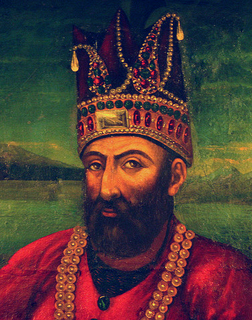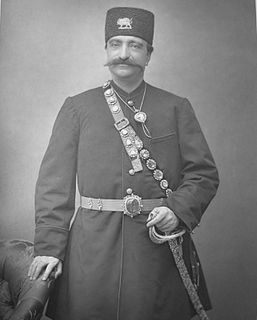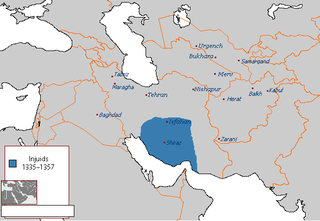This article needs additional citations for verification .(February 2014) (Learn how and when to remove this template message) |
| Malek Vineyard | |
|---|---|
| انگورستان ملک | |
 | |
Location within Iran | |
| General information | |
| Type | house |
| Location | Isfahan, Iran |
| Coordinates | 32°39′15″N51°41′11″E / 32.6541°N 51.686456°E |
The Malek vineyard is a historical house in Isfahan, Iran. The house has been taken as tax from the people in the era of Nader Shah and was for a long time a part of assets of a rich man in the city. During the reign of Naser al-Din Shah Qajar it was confiscated by the king. The Naser al-Din Shah's successors declared it as a public asset and a part of national treasury. In the Mohammad Ali Shah's era, a Hussainiya was built in the garden and its administration was handed over to an isfahanian businessman called Malek ot-Tojar. Parts of the vineyard and its building has been destroyed during the expansion and development of the city. The remaining parts include a central yard and a dining room. Presently Malek vineyard is used as Hussainia and a permit is needed for visiting. [1]

Isfahan is a city in Iran. It is located 406 kilometres south of Tehran, and is the capital of Isfahan Province.

Iran, also called Persia, and officially the Islamic Republic of Iran, is a country in Western Asia. With over 81 million inhabitants, Iran is the world's 18th most populous country. Comprising a land area of 1,648,195 km2 (636,372 sq mi), it is the second largest country in the Middle East and the 17th largest in the world. Iran is bordered to the northwest by Armenia and the Republic of Azerbaijan, to the north by the Caspian Sea, to the northeast by Turkmenistan, to the east by Afghanistan and Pakistan, to the south by the Persian Gulf and the Gulf of Oman, and to the west by Turkey and Iraq. The country's central location in Eurasia and Western Asia, and its proximity to the Strait of Hormuz, give it geostrategic importance. Tehran is the country's capital and largest city, as well as its leading economic and cultural center.

Nader Shah Afshar was one of the most powerful Iranian rulers in the history of the nation, ruling as Shah of Iran (Persia) from 1736 to 1747 when he was assassinated during a rebellion. Because of his military genius as evidenced in his numerous campaigns throughout Middle East, Caucasus, Central and South Asia, such as the battles of Herat, Mihmandust, Murche-Khort, Kirkuk, Yeghevard, Khyber Pass, Karnal and Kars, some historians have described him as the Napoleon of Persia, Sword of Persia, or the Second Alexander. Nader Shah was an Iranian who belonged to the Turkmen Afshar tribe of Khorasan in northeastern Iran, which had supplied military power to the Safavid dynasty since the time of Shah Ismail I.














